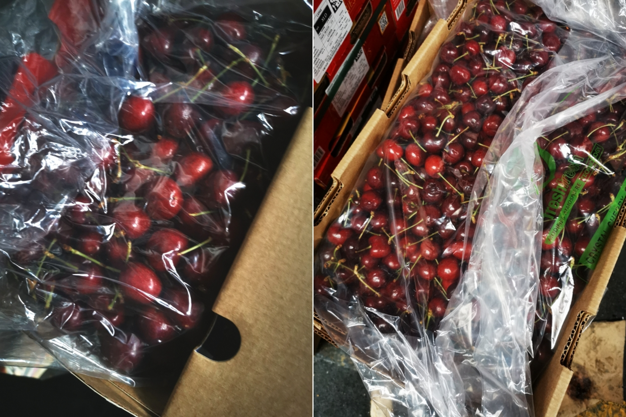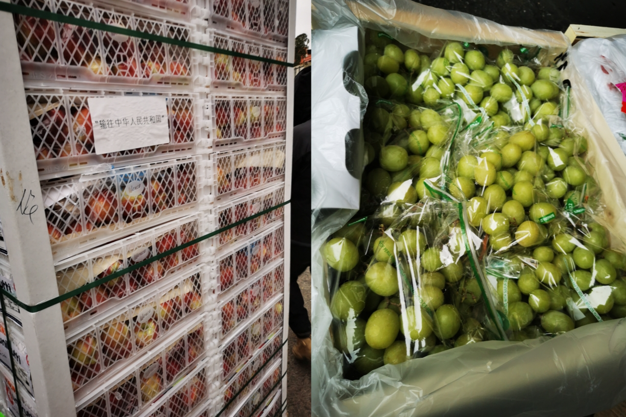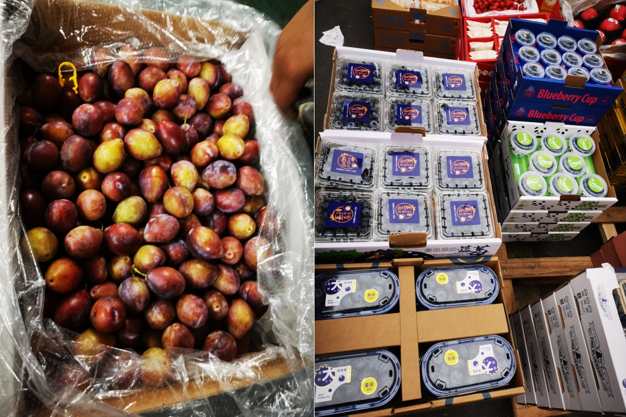Cherries have become a major player in the fruit wholesale market. New batches are constantly arriving. Currently, most of the varieties on sale are Lapins, with small fruits such as XL, J, and JJ-class being the main ones. The second most popular variety is Regina. Other varieties include Bing, Sweet heart, and Kordia. The selling price has been relatively stable in the past two weeks. For example, the 2.5KG package of Lapins JJ-class sold for about ¥160-170/piece this week, a decrease of ¥10/piece compared with last week, and the fluctuation is not big.
Merchants estimate that prices will not fluctuate significantly in the future, and some merchants said that although the recent prices have dropped significantly compared with before, they are still higher than the same period last year. At present, the overall trading atmosphere is ideal, with better sales in the first half of the week, slight price cuts for some cherries in the second half of the week, and sales of inferior fruits slowing down.
 Chilean cherries
Chilean cherries
The sales of Peruvian grapes are slow, and the price has dropped compared with the previous two weeks. Merchants selling white grapes said that the quality and taste of the current arrivals are not satisfactory, and buyers are focusing on cherries, so grape sales have not improved, and they are worried that prices will not rise in the future. Some merchants also said that grape sales peak after the Chinese New Year.
Chilean nectarines have been on the market in small quantities since late last month, and the arrivals are now increasing. According to merchants, similar to the early situation of Chilean cherries, the quality of nectarine arrivals in the early stage was poor due to weather conditions in the production area, the price fell, and subsequent prices were also lower than before. Merchants said that before Chinese New Year's Day last year, nectarines were sold for about ¥200-210/piece, but this year it was lower than¥200/piece. The current average price of medium-sized fruits is ¥140-150/piece, and a small number of high-end large fruits sell for ¥165-170/piece, but very few can sell for this price.
 Left: Chilean nectarines; Right: Peruvian white grapes
Left: Chilean nectarines; Right: Peruvian white grapes
The volume of blueberries from Yunnan has increased compared with earlier. They are sold in different packaging and specifications, including regular 125g boxes, large fruit boxes with a size of 24mm+, and 60g small cups. The price is generally stable, with a slight decrease for 15mm+. The current price is about ¥140-150/piece. Merchants say that the recent sales are better than before, and varieties with good taste such as F6 and L25 are more popular. The merchant also said that because the subsequent arrivals may be reduced and the Chinese New Year is approaching, prices are expected to rise.
The arrival of various stone fruits such as Australian plums has increased. Merchants said that the Australian stone fruit production season is as usual this year. The hardness and taste of the arrivals are good, but the sales are slow. Some merchants package stone fruits into exquisite gift boxes to meet festival needs, and lower prices to stimulate sales.
 Left: Australian plums; right: Yunnan blueberries
Left: Australian plums; right: Yunnan blueberries
As for domestic fruits, it is reported that the recent sales of apple gift boxes, which have been very popular before the Chinese New Year in previous years, are not satisfactory.
Many merchants said that at present, buyers are only focusing on cherries, which slows down the sales of other fruits. In previous years, merchants would purchase cherries with other fruits, and the overall sales would go smoothly. However, so far this year, the boosting effect of cherries on other fruits has not been apparent.
